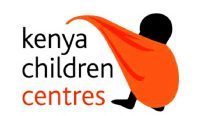A cry for help - an abandoned baby's story
A Cry for Help

Across Kenya, baby Lucy’s start to life is tragically all too common. In May 2019, in direct response to the Kenya Government, Kujali transformed a wing of its children’s centre into a Baby Home to meet the critical need of the country’s soaring number of abandoned infants.
Poverty, a dysfunctional home and the rape of very young teenage girls can see as many as one baby a week abandoned either at hospitals, in slums or in rural areas within the central Kenya region. Violence at home, illness and addiction, often amplified by poverty, leaves families unable to find the resources to help themselves. With no financial support for single mothers in Kenya, young teenage mums can find themselves on the precipice of survival, with little or no means of income, support or safety for their future.
New Beginnings

The central aim of the home remains to safely reintegrate the babies back into the community as soon as possible, ideally with the babies’ own relatives or into the arms of a safe, adoptive family.
The foundations of the Baby Home reflect the stories of hope that are brought through its doors. The interiors sing with the sight of colourful cots, stacks of toys, and comfy sofas which are surrounded by beautiful hand-painted murals featuring birds, flowers and cartoon characters.

The sizeable renovation work needed to create this specialised baby home, which included three nursery rooms, an isolation room for sick babies, a kitchen, laundry and a wash and change area – along with toilets and showers for staff and visitors – was funded by a generous grant of £15,000 from The Geoff Herrington Foundation, which also helped fund the recruitment, induction and training of the first three members of staff.
Serving the need

‘When these babies come in it’s a journey of faith as we never know the full picture,’ says Rachel. ‘A young girl who has been raped may leave the baby in the hospital or even on the street because of her circumstances and this means we have to act fast. These babies are fragile and they can die very quickly. We do everything for the babies as if they were our own. We have a wonderful group of caregivers that work in shifts providing care 24 hours a day. It takes sacrifice, a lot of love and a passion for this work but it’s all a team effort.’
Every baby admitted is treated as an emergency. Depending on the health of the baby they may require urgent treatment and it’s vital that staff try to discover more clues about the babies’ backgrounds, whether that’s hospital records or just a telephone number for next of kin. This enables the team’s social workers to try and trace the mother or the wider family in an attempt to re-integrate the baby back to its safe relatives within the community further down the line.
‘It is a process, and it has to be done very carefully. There have been cases of child trafficking in Kenya so we want to make sure we are doing things step by step in the right way,’ explains Rachel. ‘We were able to find one teenage mother who had abandoned her baby and went home and told the father that the baby had died. Luckily the mum had left the father’s phone number so our social workers were able to reach out and initiate a meeting with the mother and father. The girl was offered counselling and with some help was able to bond with the baby and be reunited. It took time but now the baby is back with her. If we have no documents or no telephone numbers, this makes it much harder and the babies can be up for adoption for some time.’

Baby Freddy, the ninth baby to be admitted to the home in March 2020, has a congenital abnormality called Club Foot and was abandoned by his mother in the post-natal ward following his birth.
With Kujali’s support, Freddy was able to receive treatment from the International Hospital which provided casts for his leg, operations, physiotherapy and, finally, corrective shoes which has allowed him to live a fuller, happier life.
Brighter futures
Since the baby home opened, five babies have been adopted and one baby has been returned to its birth mother, with three more babies on the path to adoption.

‘A baby boy and girl were found by a roadside and they arrived very tiny and fragile,’ says Rachel. ‘We didn’t know if they would survive but eventually we witnessed them growing and gaining weight. Unfortunately we could not trace any relatives and so we looked for a family that was willing to give both of them a good, safe home. They eventually went to a loving couple, who continue to visit us and we thank God they are doing well.’

An unexpected part of the baby home’s success story has been the help Kujali has been able to offer to teenage mothers: often very young girls raped by a family member or a ‘close’ friend. During 2021, the Baby Home cared for eight babies along with their mothers. They celebrated births to five teenage mums, aged 13 and 14, in the past few months.
‘The Baby Home is an expensive venture but with team effort and the help of our donors we can help children and babies who are needy, fragile and vulnerable,’ says Rachel. ‘My greatest wish is to see these babies grow into adults who can stand on their own in society and live a happy, normal life. But these babies will die out there without our help. Together, we are saving lives.’

